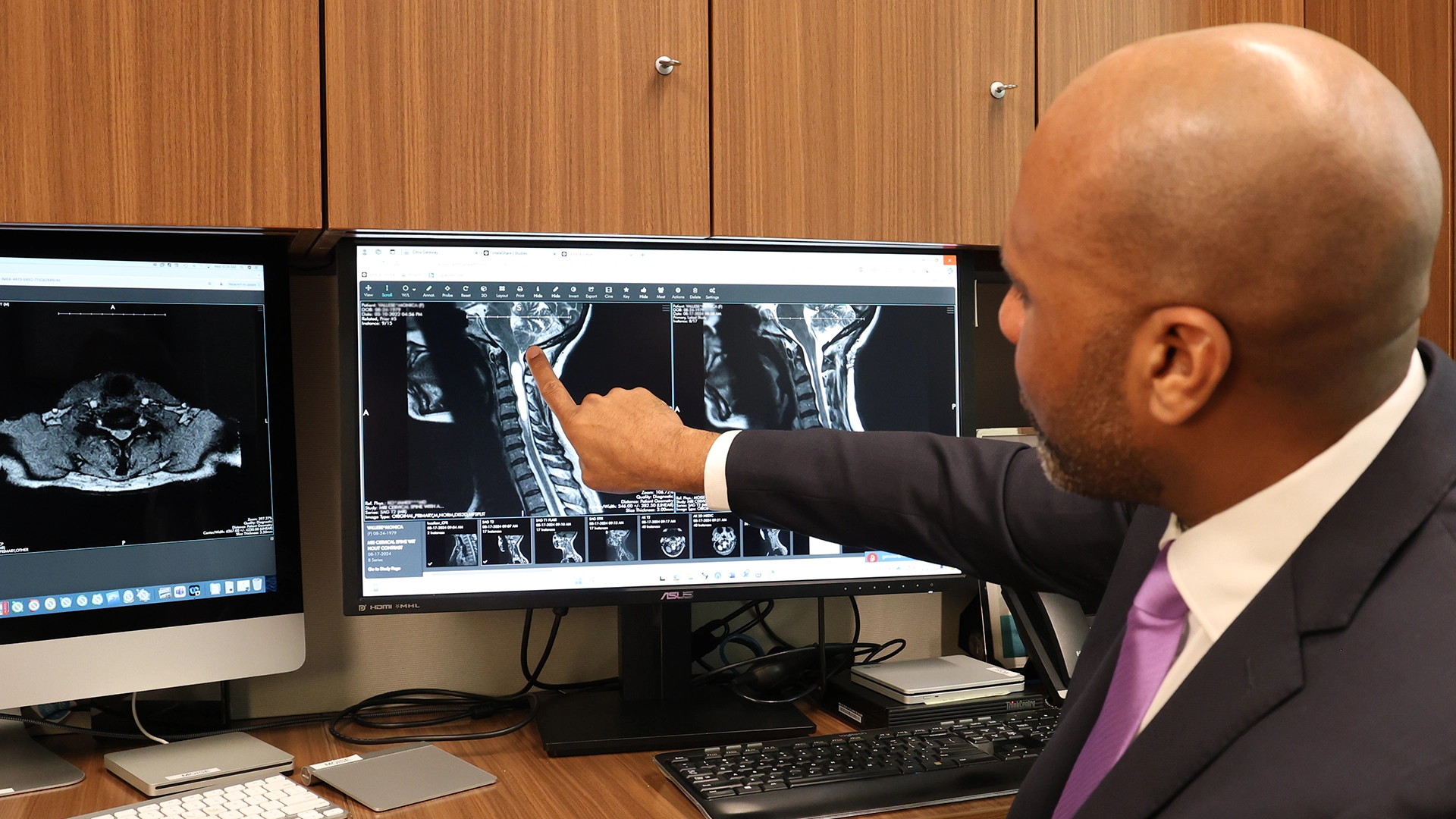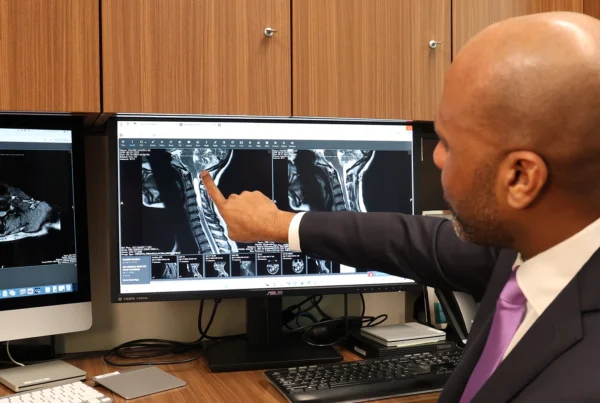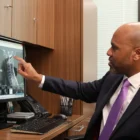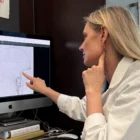Chiari malformation is a neurological condition that occurs when a part of the brain extends into the spinal canal. It can affect the normal function of the brain and spinal cord, leading to a wide variety of symptoms that range from mild discomfort to life-altering. This article describes the two most common types of Chiari malformation, typical symptoms, and how the conditions are diagnosed and treated.
What is Chiari Malformation?
Chiari malformation is a structural problem that is present at birth where part of the brain—typically the cerebellum—extends downward into the spinal canal. This can happen when the lower part of the skull or upper portion of the neck is abnormally shaped or smaller than usual, which puts pressure on the brain and interferes with the flow of cerebrospinal fluid.
The cerebellum, the part of the brain that controls balance and coordination, may protrude through the opening at the base of the skull, known as the foramen magnum. This can cause compression and disrupt communication between the brain and spinal cord.
Chiari Malformation Type 1: The Most Common Form
Chiari malformation Type 1—also called Arnold Chiari malformation Type 1—is the most frequently diagnosed form and often discovered in adolescence or adulthood. In this type, the lower part of the cerebellum (called the cerebellar tonsils) extends below the foramen magnum.
Chiari Malformation Headache: A Key Symptom
One of the most common Chiari malformation symptoms is headache in the back of the head that worsens with coughing, sneezing, laughing, or straining. This pressure-related headache can be debilitating and is a frequent reason people seek medical attention.
Other Symptoms of Arnold Chiari Malformation Type 1
- Neck pain, often radiating from the base of the skull
- Dizziness or balance problems
- Muscle weakness or numbness
- Difficulty swallowing
- Ringing in the ears (tinnitus)
- Poor hand coordination
- Fatigue
- Scoliosis in younger patients
These symptoms of Chiari can appear gradually, making diagnosis difficult.
Chiari Malformation Patient Testimonial
Monica was diagnosed with Chiari Malformation, but after surgery and a recovery plan, tailored to her, she was quickly able to return to her regular life.
Chiari Malformation Type 2 and Beyond
Chiari malformation Type 2 is usually detected at birth or during infancy. It is associated with a form of spina bifida, or spinal cord malformation called myelomeningocele, in which part of the spinal cord protrudes through an opening in the spine.
It's time to get back
to doing what you love.
Symptoms of Chiari Type II
- More severe pressure on the brain and spinal cord
- Trouble breathing
- Swallowing difficulties
- Weakness in the arms and legs
- Hydrocephalus (excess fluid in the brain)
This type is more serious than Type 1 and may be life threatening without prompt medical intervention.
Can Chiari Malformation Cause Seizures?
While seizures are not considered a primary symptom of Chiari malformation, they can occur in rare cases. In almost all cases of seizures in a patient with a Chiari malformation, the malformation is thought to be incidental (present but not related) to the seizure. In the rare cases, where no other cause for the seizure can be found, the seizure problem typically responds well to standard treatment without need to treat the Chiari.
Can Chiari Malformation Symptoms Get Worse Over Time?
Yes, Chiari malformation symptoms can get worse, especially if untreated. In some cases, symptoms get worse with age or after physical trauma. The neurological symptoms can progress if there is an underlying spinal cord cyst (hydromyelia, syrinx, or syringomyelia) being caused by the Chiari. The malformation itself can progress if there are underlying structural problems (weakness of the ligaments/tendons of the neck, other bony abnormalities), that cause greater degrees of compression over time.
What Causes Chiari Malformation?
The majority of cases are congenital, meaning they are present at birth and caused by abnormalities in the development of the part of the skull that encases the brain. Acquired Chiari malformation is caused by development of space occupying lesions in the skull (e.g., brain tumors, cerebrospinal fluid buildup) and is treated by treating the underlying cause).
Understanding Chiari malformation causes is key to early diagnosis and appropriate management.
How Is Chiari Malformation Diagnosed?
Diagnosis begins with a neurological exam and a review of symptoms. Because the symptoms can mimic other conditions, imaging tests like MRI or CT scans are essential to confirm the diagnosis and visualize the brain’s position relative to the spinal canal.
Treatment Options: From Monitoring to Surgery
Treatment depends on the severity and the type of Chiari involved. Patients without symptoms may never need treatment. Patients with mild symptoms can usually be managed conservatively. Patients with severe symptoms, those who have failed non-surgical options, and those with evidence of spinal cord damage, may need surgical intervention.
Decompression Surgery: A Common Treatment
For patients with significant symptoms, decompression surgery may be an option. This procedure entails excising a minor portion of bone from the rear of the skull and/or upper neck to alleviate pressure and reestablish the normal circulation of cerebrospinal fluid. The goal is to make more room for the brain, reduce pressure, and improve fluid circulation.
Recovery from decompression surgery varies but often results in improved quality of life for those with severe symptoms.
When to See a Specialist
If you’re experiencing chronic headaches, neck pain, or unexplained neurological symptoms, it’s important to consult a neurologist or neurosurgeon. Because Chiari malformation can present subtly and may not always show up in standard exams, a specialist will guide you through proper imaging and treatment decisions
Know the Signs and Take Action
Chiari malformation can present in a variety of ways, from mild headaches to severe neurological impairment. Timely diagnosis and personalized treatment can help you take control of your health and avoid potential complications. If you or someone you love is has been diagnosed with a Chiari malformation, don’t wait to speak to a specialist and explore options for long-term relief.
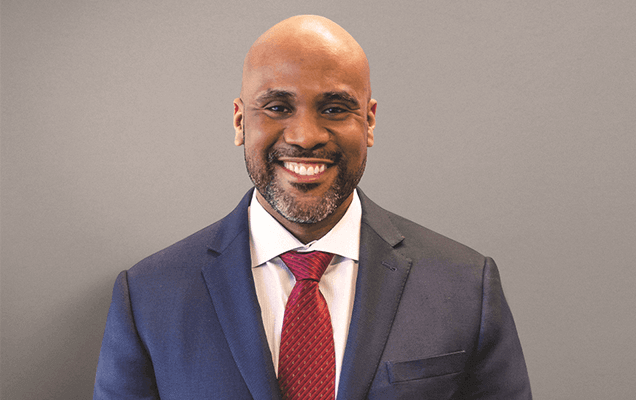
About Dr. Gaetan Moise
Dr. Gaetan Moise is an accomplished neurosurgeon in North Jersey and is a proud member of Neurosurgeons of New Jersey, practicing out of their Ridgewood office conveniently located on East Ridgewood Avenue. His compassionate evidence-based, results-driven approach is guided by his desire to help patients achieve happy, pain-free lives through non-surgical and appropriate surgical solutions. Dr. Moise’s techniques are influenced by the advancements in minimally invasive surgery technology as well as advances in the understanding of the intricacies of the nervous system, brain, and spinal cord. Dr. Moise is a member of The Congress of Neurological Surgeons and the American Association of Neurological Surgeons. He is accepting new patients.

